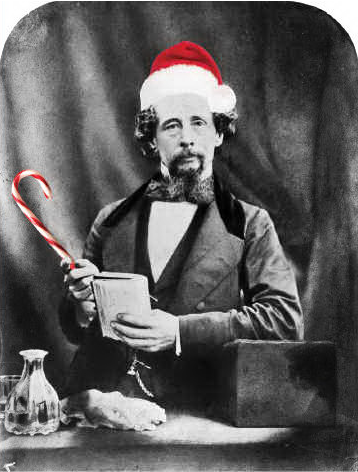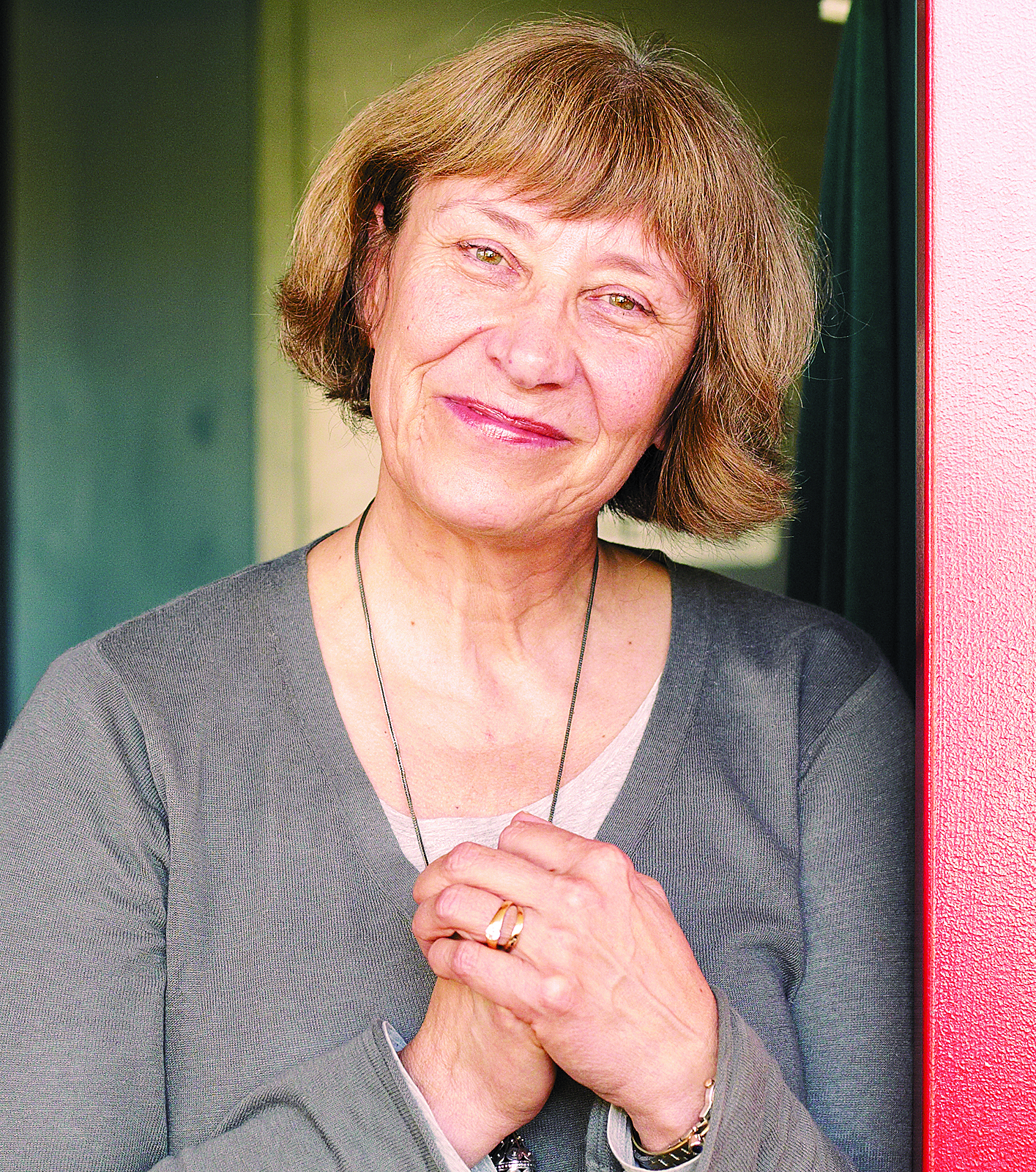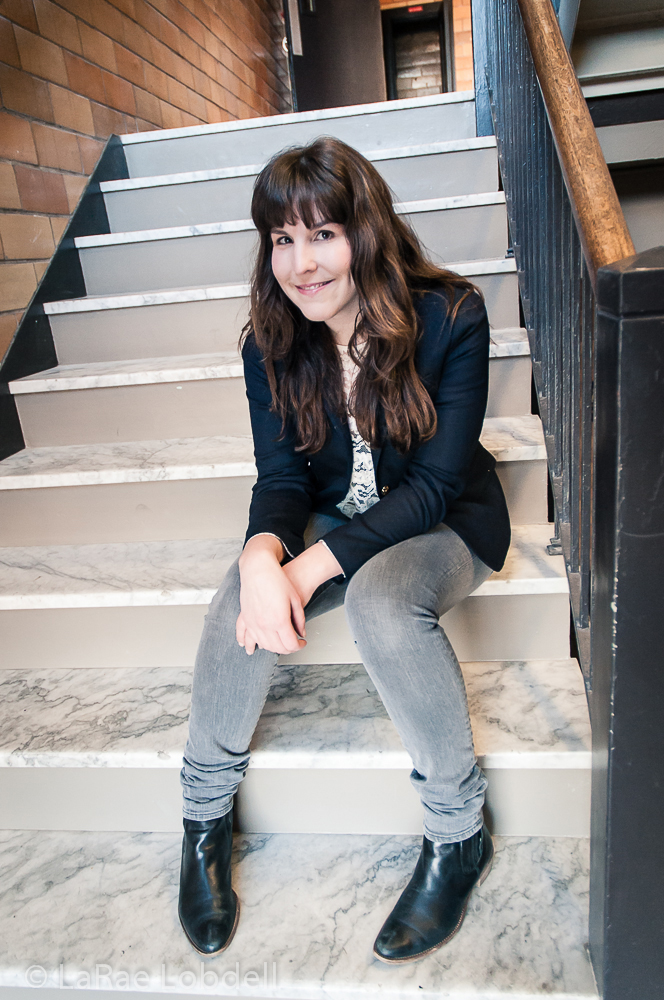The most successful thing I’ve ever written is a Christmas show. I’m proud of that. And my playwright friends are mostly envious, because most new plays, even ones that get a professional production, are lucky to ever get a second showing. Sherlock Holmes and the Case of the Christmas Carol has had six in the past three years, breaking box-office records at Taproot and Portland’s Artist’s Rep. This year it’s enjoying three more productions, including an English provincial tour, and has just been published.
Prior to this, my most popular play had four productions, all of which I directed and funded. I also ran the slides.
Sherlock’s productions were top-notch and the critics gave me the best reviews of my life, but the most unusual thing about the show was that it made the companies a lot of money. For years, American Theatre magazine ran a top-10 list of the most produced plays in the country; even excluding A Christmas Carol, holiday plays routinely accounted for anywhere from four to six of the most popular scripts. And those plays are a godsend to financially strapped theater companies, whose Christmas cash cows subsidize those daring Icelandic mime troupes during the next season.
So what are the dos and don’ts of writing a successful Christmas show? First, let’s get something out of the way. Theater artists, including me, spend a lot of time worrying about manipulating the audience. Maybe we’ve got an inflated sense of our cultural influence, but we want our characters and stories to hold your attention because of their quality, not because of trickery. But when it comes to Christmas plays, the gloves are off. Thus our first do: Manipulate wherever possible.
Take A Christmas Carol (opening Friday at ACT): Is the story manipulative? Of course it is. It’s Dickens! He was writing at a time when the Scrooges of the upper class were turning the screws so tight that a revolution of the Victorian poor was a real threat. His warning is most explicit when the Ghost of Christmas Present shows Scrooge two wretched children, Ignorance and Want, who—if left untended—will lead to the doom of all. Add to that lost love, Tiny Tim, and a tombstone with your name on it, and you’ve got one of the most effective pieces of artistic manipulation ever created.
The trouble with A Christmas Carol, though, is that ACT grabbed that valuable piece of Yuletide real estate 38 years ago. What’s more, the Greg Falls version delivers pretty much everything you want—carols, kids, comedy, dancing, and a redeemed miser. Of the show, ACT’s John Langs says, “Its focus, and my job as a director, is to tell the story of Scrooge’s transformation. Every scene is about illuminating his heart and transforming it.”
Against that holiday juggernaut, what are other Seattle theaters supposed to do? There’s a stage version of Clement Moore’s brief poem “The Night Before Christmas,” padded with “a mouse, an elf, and a spunky little girl who just won’t take no for an answer.” No, thanks. And you’ll have no better luck adapting Rudolph, the Red-Nosed Reindeer or other weird stop-motion holiday films from the 1960s. The cutesy postwar jingles they’re based on simply run out of story. Even kids get bored after the fourth commercial break. To summarize: Don’t dip into the shallow end of the holiday canon.
And unless your child’s in the cast, traditional pageants are problematic, too. Amahl and the Night Visitors and other nativity plays can alienate the secular crowd. (Remember: We want every holiday dollar.) Don’t be too churchy.
Up at Taproot, for instance, Le Club Noel mixes the concerns of French Catholics in the ’30s with le jazz hot. Co-creator Sam Vance says of the musical revue, “We’re not shying away from talking about religion during the show. It’s something that is central to our lives.” But, his wife and creative partner Candace Vance interjects, “This is the Paris of Django Reinhardt, when jazz first met French provincial folk music.” A-ha! This brings us to another important do: Include music.
That’s why there’s such a slew of Yuletide musicals. The 5th Avenue Theatre profitably embraced that route with its 2010 adaptation of Jean Shepherd’s perennial bitter nostalgia-fest A Christmas Story and other film-to-stage reverse-engineered stuff like White Christmas and last season’s Elf. They’ve also tried a few that feel Christmassy, like Joseph and the Amazing Technicolor Dreamcoat, because the Bible + kids = Christmas, right? (Wrong.)
But the sweet spot for a musical is to shove a Christmas number into your show regardless of its subject. That’s why Mame suddenly declares “We Need a Little Christmas” right in the middle of Mame, as if having an orphan as a central character weren’t enough. Annie pulls the same stunt, and while there’s no actual Christmas scene in Oliver! (opening Friday at the 5th), it’s about orphans and snow. And again, Dickens.
This brings us to another do: Orphans. I have two in my show. (Though what would really sell me is an Oliver!/Annie cage fight: Two winsome orphans go in, only one comes out . . . )
Speaking of orphans, manipulation, and Yuletide cliches: I ask Lisa Koch, whose Ham for the Holidays opens at ACT next week with comic partner Peggy Platt, is it possible to avoid those corny staples?
No way. “That’s our middle name,” she says. So don’t duck the holiday cliches, but do mix them up with non-seasonal elements. For instance, in Koch and Platt’s 13th Ham-stravaganza (subtitled Close Encounters of the Pork Rind), the country-and-western mother/daughter singing duo “the Spudds” present their new Christmas mashup, Meet Me in Mayberry—With a Vengeance, combining Judy Garland, Andy Griffith, and Die Hard II. (Thus another do: Lay into seasonal TV specials with gleeful abandon.)
Ham is comedy cabaret for grown-ups; the material’s satirical and the jokes can get raunchy. This proves that holiday shows don’t have to be family-oriented. At the same time, says Koch, that doesn’t mean embracing the darkness in what can be a time of the year involving “dealing with loss, the economy, the expectation.” For those who eat Christmas dinner alone, she says, “We’re a nice getaway for people. They get some laughter, some endorphins released.” So don’t feel a need to lay waste to Christmas traditions. No one needs their Yuletide depression made even worse.
Despite all the above advice, I’m not planning to write another Christmas show. However, I’m currently working on a musical adaptation of Vashon writer Betty MacDonald’s Anybody Can Do Anything.
Here’s a preview of the end of Act I: It’s 1932, the height of the Great Depression, and the power’s just been cut in the U District home of the Bards. It’s going to be a lean, cold Christmas for this houseful of unemployed women, until Betty’s bossy sister Mary decides she knows where to get the family both firewood and a Christmas tree. Armed with a rusty bucksaw and an indomitable nature, she heads off to Ravenna Park, to prep us for our heartwarming holiday-dinner finale.
Now if I can just find a way to work in a couple of orphans . . .
stage@seattleweekly.com








